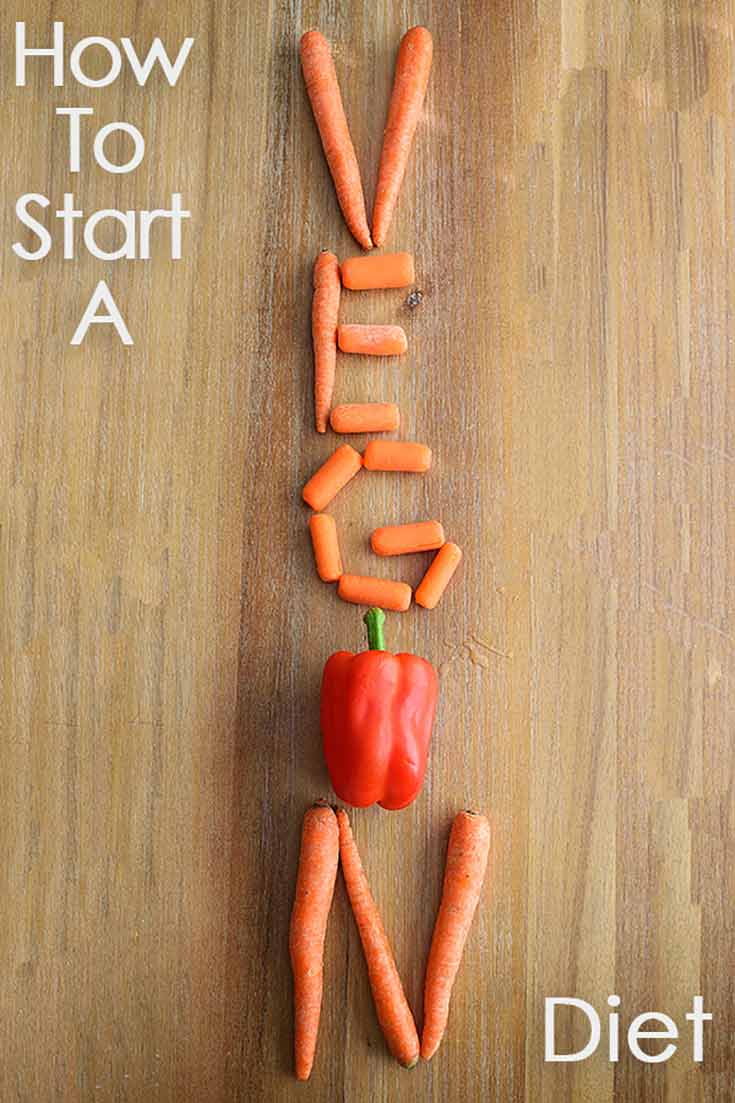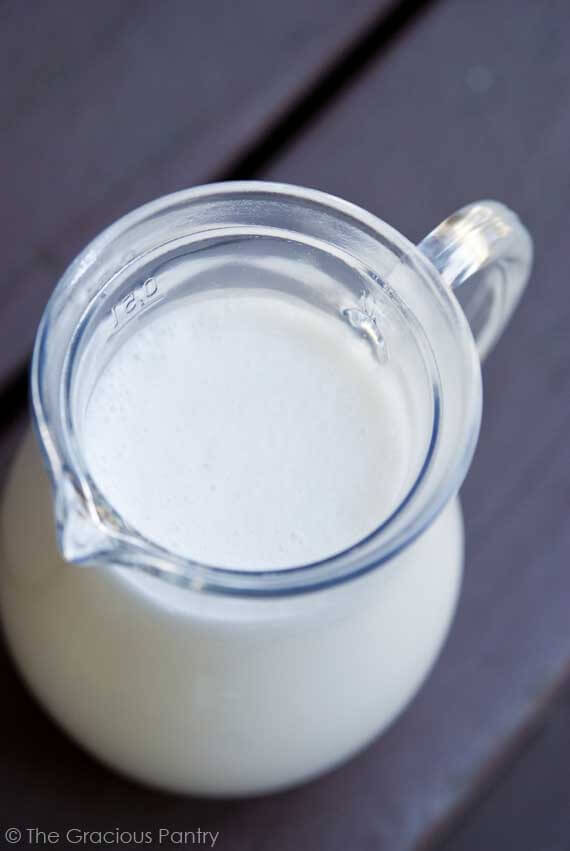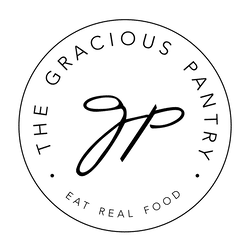How To Start A Vegan Diet Plan
Wondering how to start a vegan diet plan? I’ve got the full guide for you here!
Starting a vegan diet plan may seem intimidating, but truthfully, it isn’t as difficult as you might imagine. I’ll address the issues of getting started and explain how to make the transition a little easier.

I don’t know why this always surprises me, but I get a lot of folks these days asking me how to start a vegan diet plan.
I guess it really isn’t an unreasonable question. We get pretty set in our ways where food is concerned, and the moment we think about changing that, we suddenly have a million questions on how to make the change in question. And with plant-based diets becoming more mainstream, there should be zero surprises at all.
I went vegan for nearly two years. I think for me, it was more of a gradual thing, mentally speaking. I already ate clean, so it wasn’t a stretch to simply cut out all animal products.

HOW TO START A VEGAN DIET
While I don’t believe in taking a “negative view” on a new way of eating, I think for those wanting to figure out how to start, it can be super helpful to know what to avoid. The list for that is far shorter!
The vegan world is filled with amazing foods and flavor combinations. After having been vegan, I’m far more creative in the kitchen than before I went vegan. So creating a list of what to eat can be difficult because it’s just such a long list.
On the flip side, the list of what you should avoid is relatively short.
WHAT NOT TO EAT ON A VEGAN DIET PLAN:
- Anything that had a heartbeat at some point (Think: fish, cows, pigs, ducks, deer, chickens, etc.). If it had a face and a heartbeat and had to be killed to be on your dinner plate, you don’t eat it.
- Anything that came from something that is/was alive (Think: eggs, honey, milk, etc.) If an animal made it or produced it, you don’t eat it.
See how short a list that is? I know, I know. That alone can feel overwhelming. But I promise, if you turn to the plant kingdom for your food supply, you’ll never be left wanting!
WHAT TO EAT ON A VEGAN DIET PLAN:
For those of you who absolutely want a list of what you CAN eat, this is a very short synopsis to get you started. But just think about all the variety you can enjoy from each of these categories!
- Beans and legumes
- Fruits
- Veggies
- Herbs
- Grasses (like wild rice or wheat grass)
- Grains
- Pastas (technically a grain, but worth mentioning separately)
Basically, if it grew in the ground, on the ground, on a tree or bush, you’re good to go!
BUT WHERE WILL I GET MY PROTEIN FROM?
Apparently, this is the most common question vegans are asked. But believe it or not, I’ve never been asked this question. And be prepared because the second you go on your vegan diet plan, everyone around you will become an instant dietitian. They will all have an opinion on what you do and don’t put in your mouth. So brace yourself. But the science is there! A plant-based diet is the most healthful approach you can take to food and eating.
So where does your protein come from? That’s easy! There is protein in tofu and other vegan meat substitutes, as well as in vegetables, grains, and beans. Even things like roasted almonds offer the benefit of protein.
So as long as you add a good variety of those things to your diet, you’ll never be left wanting for protein. Even complete proteins, which is what non-vegans tend to focus on.
And while I’m not a dietitian, everything I’ve read says we don’t need as much protein to stay healthy as we think we do. There are plenty of vegan athletes and bodybuilders out there to prove it! Even the guy who holds the record for the strongest man in the world is vegan! So please know that you don’t need to eat meat to get adequate protein.

WHAT ABOUT CALCIUM?
We’ve all been sold a bill of goods from the dairy industry. And guess what? They have a vested interest in making sure that we believe that we NEED milk to get enough calcium. But that’s simply not the case. Calcium is also in leafy greens and other vegan foods. And chances are, your body will absorb it better because it’s coming from food sources instead of from vitamin fortification. But at the end of the day, if you’re truly concerned, talk to your doctor about taking a simple multivitamin to cover all your bases.
HOW ABOUT VITAMIN B12?
It’s true. Vegans do need to be sure they are getting enough vitamin B. But you can still get it from food sources if you don’t want to swallow a pill. Nutritional yeast is amazing for that, and it’s so crazy good on popcorn, in soups, and on so many other things. Even on your morning toast!
ANIMAL WELFARE
The majority population of the vegan community became vegan because of their love and concern for animals. They don’t want animals to die or suffer so they can eat or drink. Not when there are so many other foods they can eat that cause no suffering. I get it. I do. I love animals too.
But if I’m being completely honest, that’s not why I went on a vegan diet plan for those two years. In fact, there is a smaller but growing population of vegans out there who went vegan for the same reasons I did. To improve their health. End of story. Better animal welfare is just a side benefit of a choice they make for their own well-being. Maybe it’s selfish, but is there ever really a bad reason for eating more plants? Ya, not really.
And no matter which reason you choose as your motivation, you will still be eating a diet that benefits everything and everyone else in the process. So don’t ever feel bad or embarrassed about your reasons for wanting to choose a vegan lifestyle. There are a lot of very passionate animal welfare people out there, and I respect them greatly for the work that they do. I simply have other priorities in my life at the moment. I won’t apologize for that, and neither should you if you feel the same way.
SO WHERE DO YOU BEGIN?
For me, I went cold turkey. I went through my fridge, freezer, and pantry and donated all the animal products I had to a friend who was very happy to have some extra food for her family. I then went shopping and was happy to find that although my first shopping trip was a little pricey because I stocked up on a lot of basics, every shopping trip thereafter was literally HALF of what I used to spend on food. Meat is expensive!! Even the cheap stuff can cost you more than a bag of beans or a box of tofu.
But if you prefer to make the transition a little more gently, that’s okay too! Finish off whatever you have in your kitchen a little at a time, and then simply replace those things with plant-based foods as you shop each week. Eat the last of the chicken? Buy tofu and beans next time! Use up the last bottle of honey? Try buying maple syrup on your next trip to the store. It doesn’t have to break the banks or be a mass exodus of food from your fridge for you to go vegan. It’s perfectly okay to make the switch in a friendlier way to your wallet.
DO VEGAN FOODS TASTE DIFFERENT?
Okay, so here’s the low down on vegan foods. You can buy fresh, real foods, and then you can buy vegan food products. If your taste buds are having a hard time with the idea of this change, focus on the real foods first because I’m here to tell you that when you are used to animal-based products, vegan food products DO taste different. And not always in a good way. So ease yourself into any products you choose to purchase and be prepared to try them several times before giving up completely. It takes time for our tastebuds to change.
VEGAN CHEESE
When you start on your vegan diet plan, cheese is probably where you will notice the biggest difference. While plenty of vegans have gotten used to some of the plant-based vegan cheeses on the market, somebody who is new to this will generally not enjoy vegan cheese at all. I’m not saying there aren’t exceptions to that rule, but in general, most folks will not find that particular transition to be a pleasant one.
So what do you do? First, open your mind to trying new foods and different flavors. Know that some things will absolutely taste different. But it doesn’t have to be a negative experience. I have tried a few different brands of vegan cheese. Most of them truly made me gag on the spot. But I eventually found one that was tolerable and had a good melting factor for things like pizza or grilled cheese sandwiches. Does it taste different? Of course. But over time, I’ve learned to love it, and now I can’t imagine eating regular cheese. I actually crave vegan cheese from time to time now. So allow yourself the needed time to try different things, experiment and give your tastebuds a chance to make the switch. It will happen, I promise.
So far, my favorite brand of cheese is the Choa brand, as well as Daiya cheddar. I love Choa’s plain, sliced cheese. It melts great, and the flavor has really grown on me over time.
VEGAN MEAT PRODUCTS
Firstly, because I am also on a clean eating diet, I do try to avoid vegan meat unless I make it myself. I prefer to get my protein from unprocessed sources. That being said, I’m not immune to the conveniences of our food supply. So occasionally, I buy a vegan meat product just to make life easier. But I do mean that it’s OCCASIONAL. These products cost more, and they aren’t always the best thing for my health. So it’s not an everyday thing.
And yes, of course, they taste different than meat. The main connection they have with meat is in texture. But even that will be just slightly different. Again, this way of eating can be a drastic change for some people, and you absolutely have to give your body and your tastebuds time to adjust. Don’t expect to buy every vegan product on the market and love it any more than you would expect to love every single meat-based product on the market. We all have our preferences, and those preferences can change over time. So at the end of the day, it’s important to experiment, keep an open mind, and allow your body to have its adjustment period.
So far, I love Field Roast sausage and seitan. I find that they are the closest thing to meat I can get, and they have pretty good flavor. If you’d like to learn more about seitan, here’s a pretty comprehensive article about it.
WHAT IF I WANT TO GO ON A VEGAN DIET, BUT MY FAMILY DOESN’T?
I was in that situation myself, actually. It will feel impossible at first, but with a little time and effort, you’ll find that it’s really not that complicated at all.
We all need to feed our families plenty of fruits and veggies. Add a few beans to that, and all you need to do is allow them a side of the protein they choose. It’s obviously not ideal, but if that’s your situation, just know it is workable. You may have to figure out a few logistics in the beginning, but it’s absolutely not impossible. At the end of the day, you can rely on being what you believe to be a shining example of health and healthy eating for those around you. So don’t give up. Make it work for your own situation.
In my experience, it helps to cook individual foods. So, for example, you might serve a side of baked beans and rice with veggies for everyone and then some meat for everyone but you. You’ll still get your protein from the beans and rice, and nobody will be the wiser just because you are not partaking in eating meat (although some folks may comment. But overall, it’s not overly obvious). Avoid recipes like casseroles where you can’t separate out what you are eating, at least until you get the hang of this. Think of it as eating “family style.” Put a few options on the table and let everyone pick what they want.
IN CONCLUSION:
At the end of the day, if you’re going to make a change to the way you eat, you have to keep an open mind and a willingness to try different foods. Not just once, but several times before you decide you don’t like something.
Check out the growing number of vegan recipes on this site or do a Google search for easy vegan recipes and collect a few that you think you could easily make at home without creating panic in yourself or others you also feed.
And know that there is a huge community of vegans out there who are extremely passionate about this lifestyle, and they will always support you in your choice to be vegan. Join an online support group, find a Facebook group or anything that helps you feel connected to the vegan world. Because the vegan population is growing, you are truly never alone in this journey.
You can do this!


May I ask why you chose to no longer eat vegan?
Lindsay – I became very ill. I did it for nearly 2 years and felt awful, despite very carefully planning my nutrition. I had massive hair loss and gained weight like crazy towards the end. I think it works for some people, but I am not one of them. I wish I could be. I believe in the philosophy behind it, but I can’t sacrifice my health for it.